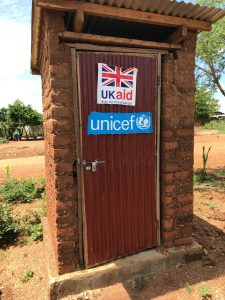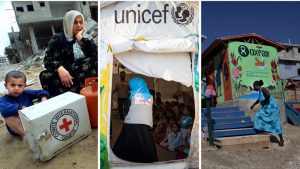World Cup puts a different spotlight on immigrations in Europe
At a time when populist politicians are trying to choke off or reroute migration flows, what matters to fans of the teams that made the World Cup semifinals–England, France, Belgium, and Croatia–wasn’t the players’ ancestry but that they excelled on the field.
When France’s xenophobic fringes disparage the country’s diverse World Cup team as more African than European, fans say, “So what?” And then respond with a resounding “Allez les Bleus!”
Europe has been enjoying the benefits of migration for centuries, and the diverse rosters at this year’s World Cup are just the latest example. When England faced Croatia in the semifinals, it fielded a team with 11 of 23 players of African or Caribbean descent. Several Croatian players were also foreign-born. And there’s the Algerian-Cameroonian roots of France’s 19-year-old breakout star Kylian Mbappe.
Laurent Dubois, a historian at Duke University, says, “Football allows us to put immigration on stage, a question that is agitating European countries right now.
Yvan Gastaut, a University of Nice historian adds: “For people who see immigration as a danger, this World Cup story won’t resolve that. But it allows us to take stock of the reality of the world, of mobility, movements, multiple identities.” Soon, he predicts, European countries will reach a point where diverse team rosters don’t matter, and “we can focus on something else other than what are our origins.”
That seems a distant dream in some quarters.
[AP]

 Ian Birrell, an international reporter and a contributing editor to Great Britain’s The Mail on Sunday, tweeted an image of a corrugated latrine door from a trip to the Bidi Bidi refugee camp in Uganda in May. Birrell wrote, “So demeaning for those who fled chaos and carnage to be endlessly reminded of their supplicant status.”
Ian Birrell, an international reporter and a contributing editor to Great Britain’s The Mail on Sunday, tweeted an image of a corrugated latrine door from a trip to the Bidi Bidi refugee camp in Uganda in May. Birrell wrote, “So demeaning for those who fled chaos and carnage to be endlessly reminded of their supplicant status.” Such logos also help ensure that charities and donors get credit for their good deeds. According to USAID’s branding guide, their red, white and blue logo “was developed to ensure that the American people are visibly acknowledged for their contributions.”
Such logos also help ensure that charities and donors get credit for their good deeds. According to USAID’s branding guide, their red, white and blue logo “was developed to ensure that the American people are visibly acknowledged for their contributions.”